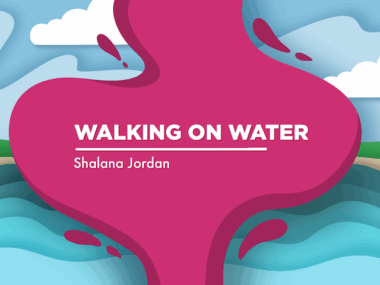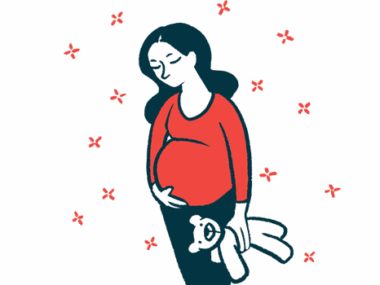Masking helps hide the effects of CKD and aHUS, even from myself
Makeup, wigs, and other tools make me look better than I often feel
Written by |

Long, voluminous, deep brown wigs; charcoal eyeliner; fluffy eyelashes and lash glue; sparkly rich tones of russet and copper eyeshadow; shaped and ombre drawn eyebrows; blood red lipstick coated in shiny gloss; perfectly manicured, gold glitter acrylic overlay on my nails; and beautiful, flirty sundresses: I use them all to hide just how sick I am.
My fiancé once said, “Sometimes I forget how sick you are until you remove your hair and makeup. I obviously love you any way you look, but the difference is shocking.”
All I could think as I looked into the mirror was, “Me, too. Sometimes I forget how sick I truly am.”
My life changed forever in September 2020, when I was admitted to the intensive care unit with multiorgan failure. After five weeks, I was told I had the rare disease atypical hemolytic uremic syndrome (aHUS).
Before that day, I’d been happy, healthy, and at the top of my game. I was a single mom raising my 4- and 5-year-old sons. I’d started a new job making more money than I ever had, and I’d just begun dating again. I was even remodeling my first home, by myself, with the aid of YouTube tutorials.
Going from that life to dying in the hospital was a stark, and bleak, change. Over the next four years, I endured the hardest challenges in my life: dialysis and plasmapheresis; lifelong monoclonal antibody infusions that give me side effects akin to chemotherapy’s; permanent damage to my kidneys, liver, and heart; a nine-month hysterectomy battle; uncontrolled hypertension; constant body swelling; and unbelievable fatigue and exhaustion.
But now that I’m long out of intensive care, I have what many people call an “invisible illness.” Many people assume, “Well, she’s out of intensive care and off dialysis, so she must be doing much better.” But they don’t realize I have permanent organ damage that affects my everyday life. I have little to no stamina, for instance. And aHUS can cause anemia and chronic kidney disease (CKD), which means my limbs don’t get enough oxygen and I experience cramping, fatigue, and intense bouts of pain if I don’t pace myself when walking or climbing stairs.
My daily medication (eculizumab, often known by the brand name Soliris) causes the most visible issues: extreme hair loss that extends to my eyelashes and eyebrows; loss of some muscle mass; yellowing of the whites of my eyes when my kidney function drops; dry, peeling skin; and varying levels of edema, or swelling. So I do a lot of things to hide and cover up those features when I go out in public.
How I mask
Wigs make the biggest instant change. My own hair now has patchy, short areas riddled with bald spots, so I wear wigs full time. Oddly enough, I get constant compliments about my hair in public, which is funny considering that it’s fake. I also use heavy eyeliner because it can easily fake the appearance of eyelashes, sometimes saving me the step of applying fake lashes and difficult lash glue.
Next is makeup. I’ve never worn foundation and concealer, but now I find my eyes always look especially tired. I thus use a mix of eyeliner shapes and choose eye shadows that match my eye color and complement my skin tone. That way my eyes look bigger and brighter.
Lastly, I deal with my edema, which occurs mostly in my feet, ankles, and legs. Having stage 4 CKD means my body has a hard time processing fluids, so they build up in my body and settle in my lower extremities, causing severe swelling. I hide it with long, flowing sundresses most of the time.
Edema is one of my strongest reminders that I’m as sick as I am. The other morning I was sitting on my deck, which overlooks a lake. I glanced at my ankles and feet and was genuinely shocked at how swollen and misshapen they were. Swelling is a part of my everyday life now, but it was only 10 a.m. All I’d done was take the kids to school, walk down four sections of stairs, and then walk back up two sections of stairs to get into and out of my home. Yet here I was with unrecognizable feet.
It’s a harsh reminder of just how sick I am, and it still throws me off every time.
I always get a boost when I see a better-looking version of myself in mirrors, or when I get compliments from strangers who have no idea I feel like crap inside. Dare I say it, but looking better makes me feel better. That means I have to be careful not to push my body (as I sometimes do) just because of the endorphin boost I get from looking nice.
Unfortunately, though, I’m still very sick, so I must guard what’s left of my body and health so my children can have me for as long as possible.
Note: aHUS News is strictly a news and information website about the disease. It does not provide medical advice, diagnosis, or treatment. This content is not intended to be a substitute for professional medical advice, diagnosis, or treatment. Always seek the advice of your physician or other qualified health provider with any questions you may have regarding a medical condition. Never disregard professional medical advice or delay in seeking it because of something you have read on this website. The opinions expressed in this column are not those of aHUS News or its parent company, Bionews, and are intended to spark discussion about issues pertaining to aHUS.






Leave a comment
Fill in the required fields to post. Your email address will not be published.